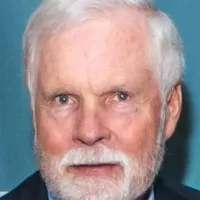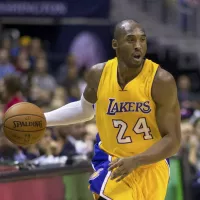The Philippines is an archipelagic nation in Southeast Asia, situated in the western Pacific Ocean. Comprising 7,641 islands spread across Luzon, Visayas, and Mindanao, its total area spans approximately 300,000 square kilometers. With a population exceeding 112 million, it ranks as the world's fourteenth most populous country.
1900: Historical forest cover in the Philippines
In 1900, forest cover in the Philippines was approximately 70 percent of the total land area.
1902: American civilian government established
In 1902, after the fall of the First Philippine Republic, an American civilian government was established through the Philippine Organic Act.
1911: Wettest recorded typhoon in the Philippines
From July 14 to 18, 1911, the wettest recorded typhoon dropped 2,210 millimeters (87 in) of rain in Baguio.
1919: First Filipino-Produced Feature Film
In 1919, the first Filipino-produced feature film, 'Dalagang Bukid (A Girl from the Country)', directed by Jose Nepomuceno, was released.
1924: Summer Olympic Games Participation
Since 1924, the Philippines has participated in every Summer Olympic Games, with one exception.
1933: Emergence of Sound Films
In 1933, sound films and larger productions emerged in the Philippine film industry.
1934: Tydings-McDuffie Act granted transition to independence
In 1934, the Tydings–McDuffie Act was enacted, granting a ten-year transition to Philippine independence.
1935: Creation of the Commonwealth of the Philippines
In 1935, the Commonwealth of the Philippines was created as part of the ten-year transition to independence, with Manuel Quezon as president and Sergio Osmeña as vice president.
1935: Republic of the Philippines official title
In 1935, the official title "Republic of the Philippines" was included in the constitution, solidifying the name of the future independent state.
1942: Japanese occupation of the Philippines
Beginning in 1942, the Japanese occupation of the Philippines was opposed by large-scale underground guerrilla activity.
1944: Philippine resistance and Allied troops defeated the Japanese
In 1944, the Philippine resistance and Allied troops defeated the Japanese.
July 4, 1946: US recognizes Philippine independence
On July 4, 1946, the United States recognized the Philippines' independence with the Treaty of Manila, during the presidency of Manuel Roxas.
1946: Philippines became independent
In 1946, the Philippines gained independence after the United States retook the country from the Japanese following World War II.
1946: Women's suffrage in the Philippines
The introduction of women's suffrage during the Commonwealth period (1935–1946) signifies a progressive step towards gender equality in the Philippines. This gave women the right to vote and participate in the country's political processes.
1948: Population Increase
Between 1948 and 2010, the population of the Philippines increased almost fivefold, starting from 19 million in 1948.
1951: Mutual Defense Treaty signed with the United States
In 1951, the Philippines and the United States signed a Mutual Defense Treaty, solidifying a security alliance between the two countries.
1962: Decline in Quality Films
The 1962–1971 decade saw a decline in quality films in the Philippines.
1963: Establishment of Science High Schools
In 1963, science high schools for talented students were established in the Philippines.
1967: Largest Global Supplier of Nurses
Since 1967, the Philippines had become the largest global supplier of nurses; seventy percent of nursing graduates go overseas to work.
1971: Decline in Quality Films
The 1962–1971 decade saw a decline in quality films in the Philippines.
September 21, 1972: Marcos declares Martial Law
On September 21, 1972, Ferdinand Marcos declared martial law, initiating a period of rule by decree characterized by political repression, censorship, and human rights violations.
1972: Martial Law declared by Ferdinand Marcos
In 1972, Ferdinand Marcos declared martial law, initiating a period marked by dictatorship.
1972: Winter Olympic Games Debut
In 1972, the Philippines made its debut at the Winter Olympic Games, becoming the first tropical nation to compete.
1973: Plans to harness nuclear energy
Plans to harness nuclear energy began during the early 1970s in the Philippines, during the presidency of Ferdinand Marcos, in response to the 1973 oil crisis.
1975: Philippines values relations with China
Since 1975, the Philippines has placed importance on its relationship with China, now its top trading partner, fostering significant cooperation between the two nations.
1976: Major earthquake in the Moro Gulf
In 1976, a major earthquake occurred in the Moro Gulf.
1979: Origin of Filipino hip-hop
Filipino hip-hop originated in 1979.
1980: Boycott of the Summer Olympics
In 1980, the Philippines supported the American-led boycott of the Summer Olympics.
1981: End of Martial Law
In 1981, the period of martial law under Ferdinand Marcos came to an end.
1982: Release of Critically Acclaimed Films
In 1982, critically acclaimed Philippine films 'Himala (Miracle)' and 'Oro, Plata, Mata (Gold, Silver, Death)' were released.
August 21, 1983: Assassination of Benigno Aquino Jr.
On August 21, 1983, opposition leader Benigno Aquino Jr. was assassinated at Manila International Airport.
1984: Economic contraction in the Philippines
In 1984, the Philippine economy contracted by 7.3 percent annually due to economic crashes exacerbated by an early 1980s recession.
1984: Nuclear power plant completed
The Philippines completed Southeast Asia's first nuclear power plant in Bataan in 1984.
1985: Economic contraction in the Philippines
In 1985, the Philippine economy contracted by 7.3 percent annually due to economic crashes exacerbated by an early 1980s recession.
1985: Poverty Rate
In 1985, the Philippines' poverty rate was 49.2 percent.
1986: CPP-NPA decline after return of democracy
After the return of democracy in 1986, the Communist Party of the Philippines (CPP) and its military wing, the New People's Army (NPA), experienced military and political decline.
1986: Chernobyl disaster
Following Marcos' ouster and safety concerns after the 1986 Chernobyl disaster, the Bataan nuclear power plant was not commissioned, and its operation remains controversial.
1986: People Power Revolution
In 1986, protests resulting from a fraudulent election led to the People Power Revolution, forcing Marcos and his allies to flee to Hawaii and installing Corazon Aquino as president.
1986: People Power Revolution overthrows Marcos
In 1986, the People Power Revolution led to the overthrow of Ferdinand Marcos and the return to democracy in the Philippines.
1986: Government reforms began
In 1986, the return of democracy and government reforms began, which were hampered by national debt, government corruption, and coup attempts.
1990: Progress in Sanitation Access
Between 1990 and 2015, the Joint Monitoring Programme for Water Supply and Sanitation noted that 'good progress' had been made in access to improved sanitation in the Philippines.
1990: Filipino hip-hop enters mainstream
Filipino hip-hop, which originated in 1979, entered the mainstream in 1990.
1990: Major earthquake on Luzon
In 1990, a major earthquake struck Luzon.
June 1991: Eruption of Mount Pinatubo
In June 1991, the eruption of Mount Pinatubo occurred, contributing to the challenges faced by the government.
1991: Devolution of powers to local governments
A 1991 law devolved some powers to local governments in the Philippines, marking steps towards decentralization.
1995: Military modernization program began
In 1995, a military modernization program began in the Philippines to build a more capable defense system.
1996: Peace agreement signed with Moro National Liberation Front
In 1996, the Moro National Liberation Front signed a final peace agreement with the Philippine government, aiming to resolve separatist conflict.
1996: First satellite bought
In 1996, the Philippines bought its first satellite, marking the beginning of its space program.
1997: Asian financial crisis
In 1997, the onset of the Asian financial crisis overshadowed economic gains.
1999: Forest cover in the Philippines
In 1999, forest cover in the Philippines had declined to about 18.3 percent of the total land area.
1999: Visiting Forces Agreement signed with the United States
In 1999, the Philippines and the United States supplemented their defense treaty with the Visiting Forces Agreement, facilitating military cooperation.
2000: Jade artifacts
By 2000 BC, jade artifacts had been dated in the Philippines, including lingling-o jade items made in Luzon using raw materials from Taiwan.
January 20, 2001: Gloria Macapagal Arroyo succession
On January 20, 2001, Joseph Estrada was overthrown by the 2001 EDSA Revolution, leading to the succession of Vice President Gloria Macapagal Arroyo.
2003: Philippines designated a major non-NATO ally
In 2003, the Philippines was designated a major non-NATO ally by the United States, recognizing its strategic importance.
2003: Philippines seeks observer status in the Organisation of Islamic Cooperation
Since 2003, the Philippines has sought to obtain observer status in the Organisation of Islamic Cooperation.
2004: Electoral fraud allegations
During the 2004 presidential election, Arroyo's administration was tainted by electoral fraud allegations.
2004: Alternative Education Program
In 2004, the government began offering alternative education to out-of-school children, youth, and adults to improve literacy; madaris were mainstreamed in 16 regions that year.
2007: SMS messages per day
In 2007, the Philippines sent an average of one billion SMS messages per day, highlighting the popularity of text messaging.
2009: Management of power grid
Since 2009, the National Grid Corporation of the Philippines has managed the country's power grid, providing transmission lines across the islands.
2010: Population Increase
Between 1948 and 2010, the population of the Philippines increased almost fivefold, reaching 92 million in 2010.
2010: Pinoy pop influenced by K-pop and J-pop
From 2010 to 2020, Pinoy pop (P-pop) was influenced by K-pop and J-pop.
2010: Protestant Population
In 2010, Protestants made up about 5% to 7% of the Philippines' population.
2010: Philippines enters ASEAN Trade in Goods Agreement
In 2010, the Philippines entered into the ASEAN Trade in Goods Agreement, aiming to foster economic integration and free trade within the Association of Southeast Asian Nations.
2010: Average annual growth rate
Since around 2010, the Philippines has experienced an average annual growth rate of six to seven percent, becoming one of the world's fastest-growing economies.
2012: Boracay called the best island in the world
In 2012, Travel + Leisure called Boracay the best island in the world, boosting its reputation as a tourist destination.
2012: Expanded military modernization program
In 2012, the Philippines expanded its military modernization program to enhance its defense capabilities.
2012: Decline in Income Inequality
In 2012, the Philippines' income inequality began to decline.
2012: Scarborough Shoal standoff between China and the Philippines
The 2012 Scarborough Shoal standoff occurred after China seized the shoal from the Philippines, leading to international arbitration.
2013: Roman Catholic Population
As of 2013, the Philippines had the world's third-largest Roman Catholic population and was Asia's largest Christian nation.
2014: Peace agreement signed with Moro Islamic Liberation Front
In 2014, the Moro Islamic Liberation Front signed a final peace agreement with the government, continuing efforts to achieve peace in Bangsamoro.
2015: Improved Sanitation Access
In 2015, the Joint Monitoring Programme for Water Supply and Sanitation noted that 74 percent of the Philippine population had access to improved sanitation, showing 'good progress' between 1990 and 2015.
2015: Gold production in the Philippines
In 2015, the Philippines' gold production was 21 metric tonnes.
2016: Genetic Markers Project
A 2016 National Geographic project concluded that people living in the Philippine archipelago carried genetic markers in the following percentages: 53 percent Southeast Asia and Oceania, 36 percent Eastern Asia, 5 percent Southern Europe, 3 percent Southern Asia, and 2 percent Native American (from Latin America).
2016: Household Access to Water and Sanitation
As of 2016, 96 percent of Filipino households had an improved source of drinking water, and 92 percent had sanitary toilet facilities.
2016: Launch of Diwata-1
In 2016, Diwata-1, the Philippines' first micro-satellite, was launched on the United States' Cygnus spacecraft.
2016: Enhanced Defense Cooperation Agreement with the United States
In 2016, the Philippines and the United States further strengthened their military ties with the Enhanced Defense Cooperation Agreement.
2016: Election of Rodrigo Duterte
The 2016 election saw the victory of populist Rodrigo Duterte, marking a decline of liberalism in the country.
2017: Air domestic market
In 2017, the air domestic market was dominated by Philippine Airlines and Cebu Pacific.
December 2018: Roads in the country
In December 2018, there were 210,528 kilometers of roads in the Philippines.
2018: Establishment of Malasakit Centers
Since 2018, Malasakit Centers (one-stop shops) have been set up in several government-operated hospitals to provide medical and financial assistance to indigent patients.
2019: Railway footprint
As of 2019, the Philippines had a railway footprint of only 79 kilometers.
2019: Number of Higher Education Institutions
As of 2019, the Philippines has 1,975 higher education institutions.
2019: Literacy Rate
In 2019, the Philippines had a basic literacy rate of 93.8 percent of those five years old or older, and a functional literacy rate of 91.6 percent of those aged 10 to 64.
2019: Universal Health Care Act
In 2019, the Universal Health Care Act was enacted by President Duterte, facilitating the automatic enrollment of all Filipinos in the national health insurance program.
2019: Tourism jobs provided
In 2019, tourism provided 5.7 million jobs in the Philippines.
May 2020: ABS-CBN Franchise Denial
In May 2020, the Philippine government denied ABS-CBN's franchise renewal; before this, it was the country's largest network.
2020: Muslim Population
According to the 2020 census, Islam is the Philippines' second-largest religion, with 6.4 percent of the population.
2020: Calabarzon region with greatest population as of 2020
As of 2020, Calabarzon was identified as the region with the greatest population in the Philippines.
2020: Religious Census Data
Census data from 2020 found that 78.8 percent of the Philippine population professed Roman Catholicism.
2020: Pinoy pop influenced by K-pop and J-pop
From 2010 to 2020, Pinoy pop (P-pop) was influenced by K-pop and J-pop.
2020: Urban Population Percentage
In 2020, 54 percent of the Philippines' population lived in urban areas.
2020: Main export and import markets in 2020
In 2020, the Philippines' main export markets were China, the United States, Japan, Hong Kong, and Singapore, while its primary import markets were China, Japan, South Korea, the United States, and Indonesia. The Philippines was also the biggest importer of copra in 2020.
2020: Languages spoken at home
In 2020, the top languages generally spoken at home in the Philippines were Tagalog, Binisaya, Hiligaynon, Ilocano, Cebuano, and Bikol.
2020: COVID-19 pandemic reaches the Philippines
In early 2020, the COVID-19 pandemic reached the Philippines, leading to nationwide lockdowns and a severe economic recession.
2020: Ethnic Diversity Census
In the 2020 census, the largest ethnic groups in the Philippines were Tagalog (26.0 percent), Visayans (14.3 percent), Ilocano and Cebuano (both eight percent), Hiligaynon (7.9 percent), Bikol (6.5 percent), and Waray (3.8 percent).
2021: Household electrification level
As of end-2021, the Philippines' household electrification level was about 95.41%.
2021: Reduced Poverty Rate
By 2021, the Philippines had reduced its poverty rate to 18.1 percent.
2021: Tourism contributed to the Philippine GDP
In 2021, Tourism contributed 5.2 percent to the Philippine GDP.
2021: Installed power capacity
In 2021, the Philippines had a total installed power capacity of 26,882 MW, with a mix of energy sources including coal, oil, hydropower, natural gas, and geothermal.
2021: Dito Telecommunity entry
In 2021, the entry of Dito Telecommunity improved the Philippines' telecommunications service, breaking the PLDT-Globe Telecom duopoly.
2021: Leading Causes of Death
In 2021, the leading causes of death in the Philippines were ischaemic heart diseases, cerebrovascular diseases, COVID-19, neoplasms, and diabetes.
2021: Water withdrawals
In 2021, total water withdrawals in the Philippines were 89 billion cubic meters.
2021: First Olympic Gold Medal
In 2021, weightlifter Hidilyn Diaz won the Philippines' first-ever Olympic gold medal at the Tokyo Olympics.
January 2022: Women's National Football Team World Cup Qualification
In January 2022, the Philippines women's national football team qualified for the 2023 FIFA Women's World Cup, marking their first-ever appearance in the World Cup.
2022: AFP Manpower
As of 2022, the Armed Forces of the Philippines had a total manpower of around 280,000, including active military personnel, reserves, and paramilitaries.
2022: National government-owned airports
As of 2022, the Philippines had 90 national government-owned airports, of which eight are international.
2022: Bongbong Marcos wins election
In 2022, Bongbong Marcos, son of Ferdinand Marcos, won the election with Sara Duterte as his running mate.
2022: Country for Journalists
In 2022, the Philippines was listed as the seventh-most-dangerous country for journalists by the Committee to Protect Journalists due to 13 unsolved murders of journalists.
2022: Philippines second biggest exporter of nickel ore
In 2022, the Philippines was the world's second biggest exporter of nickel ore.
2022: Increased Water Withdrawals and Expenditures
In 2022, total water withdrawals in the Philippines increased to 91 billion cubic meters, up from 89 billion cubic meters in 2021, and total expenditures on water amounted to ₱144.81 billion.
2023: Forest cover in the Philippines
According to official estimates, the Philippines had 7,000,000 hectares (27,000 sq mi) of forest cover in 2023.
2023: American Citizens in the Philippines
As of 2023, almost 300,000 American citizens live in the Philippines.
2023: Average Life Expectancy
As of 2023, the average life expectancy in the Philippines is 70.48 years (66.97 years for males, and 74.15 years for females).
2023: Education Budget and Public Libraries
In 2023, education was allocated ₱900.9 billion from the national budget, and the country had 1,640 public libraries affiliated with the National Library of the Philippines.
2023: Remittances reached record in 2023
In 2023, remittances from overseas Filipinos reached a record US$37.20 billion, accounting for 8.5 percent of the country's GDP.
2023: International visitors
In 2023, the Philippines attracted 5.45 million international visitors.
2023: Philippines enters Regional Comprehensive Economic Partnership FTA
In 2023, the Philippines entered into the Regional Comprehensive Economic Partnership (RCEP) free trade agreement (FTA), further expanding its trade relationships with countries in the Asia-Pacific region.
2023: Philippine Military Spending
In 2023, the Philippines spent US$477 million, which was 1.4 percent of its GDP, on its military.
2023: FIFA Women's World Cup
In 2023, the Philippines women's national football team is scheduled to participate in the FIFA Women's World Cup.
2023: Philippine labor force in 2023
In 2023, the Philippines' labor force was around 50 million, with an unemployment rate of 3.1 percent.
2023: Healthcare Budget Allocation
In 2023, the budget allocation for healthcare in the Philippines was ₱334.9 billion.
January 2024: Gross international reserves
As of January 2024, the Philippines' gross international reserves totaled US$103.406 billion.
July 2024: Philippine Population
In July 2024, the Philippines had a population of 112,729,484.
2024: Per-capita Health Expenditure
In 2024, per-capita health expenditure in the Philippines was ₱12,751, and health expenditures were 5.9 percent of the country's GDP.
2024: Philippines ranked in Global Peace Index
In 2024, the Philippines ranked 104th out of 163 countries in the Global Peace Index.
2025: Projected Number of American Citizens in the Philippines
By the year 2025, it is projected that the number of American citizens living in the Philippines will increase to 750,000.
2025: Estimated 2025 nominal gross domestic product
The Philippine economy is estimated to have a 2025 nominal gross domestic product of US$507.7 billion, making it the world's 34th largest.
Mentioned in this timeline

Martial law is the imposition of military rule in place...
ASEAN is a political and economic organization comprised of Southeast...
Hong Kong is a Special Administrative Region of the People's...
China officially the People's Republic of China PRC is an...
Japan is an East Asian island country situated in the...

An earthquake is the shaking of the Earth's surface caused...
Trending

15 minutes ago Jane Fonda Praises Ex-Husband Ted Turner’s Support; Celebrates 30 Years Reducing Teen Pregnancy.

15 minutes ago Texas Faces Record Whooping Cough Surge: Health Alert Issued Amid Rising Cases

1 hour ago Trump Withdraws Nominee for Top IRS Lawyer Amidst Loomer Controversy.

1 hour ago Yungblud teams with Aerosmith for Rolling Stone UK cover; concert and rock relationship.

2 hours ago Keanu Reeves and Alex Winter Reunite for 'Waiting for Godot' Broadway Revival.

2 hours ago Kobe Bryant's dominance, UCLA runs, and NBA 2K texts revealed in new stories.
Popular

Chuck Schumer is the senior United States Senator from New...

Nancy Pelosi is a prominent American politician notably serving as...

Bernie Sanders is a prominent American politician currently serving as...
Nicholas J Fuentes is a far-right political commentator and activist...

Candace Owens is an American political commentator and author known...

XXXTentacion born Jahseh Dwayne Ricardo Onfroy was a controversial yet...